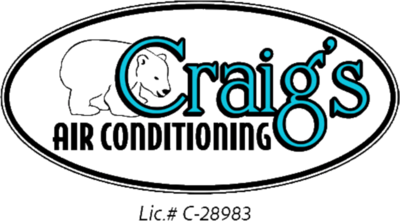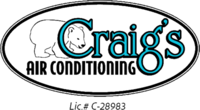Is It Normal for Your AC to Run All Day?
As temperatures rise, you may notice your air conditioner running longer than usual to keep your home cool. This often leads to a common question: Is it normal for an AC to run all day? The answer depends on several factors—some perfectly normal, others that could point to an issue. In this post, we’ll walk you through what affects your AC’s runtime, when it’s a sign of a problem, and how to reduce your energy costs.
Understanding How Your AC Works
Your air conditioner cools your home by removing heat and humidity from the air. It does this by cycling refrigerant through coils and using fans to push the cooled air throughout your space. When your AC seems to run all day, it could simply be doing its job—or there might be something going on that needs attention. Knowing what to look for can help you decide when everything’s fine and when it’s time to call a professional.
Factors That Affect AC Runtime
Outdoor Temperature
On especially hot or humid days, it’s completely normal for your AC to run longer to keep up with rising indoor temperatures. The hotter it is outside, the harder your system has to work to cool the inside. This is especially true during heatwaves or in warmer climates.
In fact, it’s not uncommon for ACs to run for 12–16 hours a day in extreme conditions. The key is whether it's maintaining a comfortable indoor temperature—if it is, the system is likely functioning as it should.
Thermostat Settings
If your thermostat is set too low, your AC may run nonstop trying to reach that number—especially if there’s a big gap between indoor and outdoor temperatures. Try setting your thermostat a bit higher and using a programmable or smart thermostat to make automatic adjustments during the day.
Home Insulation
Poor insulation lets cool air escape and hot air enter, making your AC run longer to make up for the loss. Adding insulation, sealing windows and doors, or investing in energy-efficient windows can reduce your system’s workload.
AC Unit Size
If your AC unit is too small for your home, it may run all day without ever reaching the set temperature. On the other hand, a unit that’s too large can short cycle (turn on and off too frequently), which isn’t efficient either. Getting a properly sized unit is key.
Maintenance and Condition
A poorly maintained system will have to work harder to cool your home. Dirty filters, low refrigerant levels, or clogged coils can all reduce efficiency. Regular maintenance—including cleaning filters and yearly professional inspections—keeps your system running smoothly.
Signs Your AC Might Be Overworking
Even if long run times are sometimes normal, certain warning signs could point to a bigger issue:
Constant Running Even at Night: Your AC shouldn’t be running constantly during cooler evening hours. This could point to insulation issues, a dirty filter, or thermostat problems.
High Energy Bills: A sudden spike in your power bill may mean your AC is working harder than it should. Monitor your energy use and compare it to previous months to catch changes.
Uneven Cooling: If some rooms are warmer than others, there may be airflow issues. Check for blocked vents, leaky ducts, or closed registers.
Frequent Repairs: If you’re calling for repairs often, your unit could be nearing the end of its lifespan. It might be more cost-effective to replace it with a newer, more efficient model.
How Much Does It Cost to Run Your AC All Day?
The cost of running your AC all day depends on how efficient your unit is, how long it runs, and—most importantly—your electricity rate.
As of April 2025, the average residential electricity rate in the U.S. is 16.26¢ per kilowatt-hour (kWh). In Hawaii, that rate jumps to 42.34¢ per kWh, the highest in the country. That difference can make a big impact on your electric bill.
Here’s a breakdown of estimated daily and annual costs to run an average AC unit that uses about 3 kW per hour:
| Location | Rate (¢/kWh) | Daily Runtime | Estimated Daily Cost | Estimated Annual Cost |
|---|---|---|---|---|
| U.S. Average | 16.26¢ | 12 hrs | $5.86 | $2,139 |
| U.S. Average | 16.26¢ | 24 hrs | $11.71 | $4,274 |
| Hawaii | 42.34¢ | 12 hrs | $15.24 | $5,563 |
| Hawaii | 42.34¢ | 24 hrs | $30.48 | $11,124 |
Tips to Lower Cooling Costs
Adjust Thermostat: Set it higher when you're not home, or use a smart thermostat.
Use Fans: Ceiling and portable fans help circulate cool air and reduce the load on your AC.
Seal Leaks: Use weather stripping and seal gaps to keep cool air inside.
Schedule Maintenance: Keep your system clean and have it inspected annually.
Is It Normal for AC to Run All Day in Hawaii?
Yes, in many parts of Hawaii, where temperatures and humidity stay consistently high, it's fairly common for AC systems to run for long hours—especially during peak daytime heat. However, if your system runs all day and still doesn’t cool effectively or your energy bills spike, it could be a sign that something needs to be checked.
When to Call an HVAC Pro
If your AC is running constantly and you’ve ruled out thermostat settings or hot weather, it’s a good idea to schedule an inspection. A technician can check for refrigerant leaks, worn-out parts, and system inefficiencies.
Conclusion
While it’s normal for your AC to run longer during hot or humid weather—especially in places like Hawaii—it shouldn’t run 24/7 without keeping your home cool. Understanding the factors that impact runtime can help you know when everything’s working as it should, and when it’s time to look deeper. With regular maintenance, smart thermostat settings, and good insulation, you can stay comfortable while keeping your energy costs under control.
Still concerned your AC is working too hard? Schedule a professional inspection to make sure your system is operating efficiently and ready for the heat ahead.
Frequently Asked Questions
-
Yes, you can run a portable AC all day as long as it’s ventilated properly and the filters are clean. Keep an eye on the water collection tank if your unit doesn’t self-evaporate.
-
Absolutely. Window AC units are built to run for extended periods. Just make sure the filter is clean, the unit is level, and it's not blocked by curtains or furniture.
-
That varies by climate, insulation, and thermostat settings. On hot days, 12–16 hours can be normal. Anything significantly longer might need inspection.





